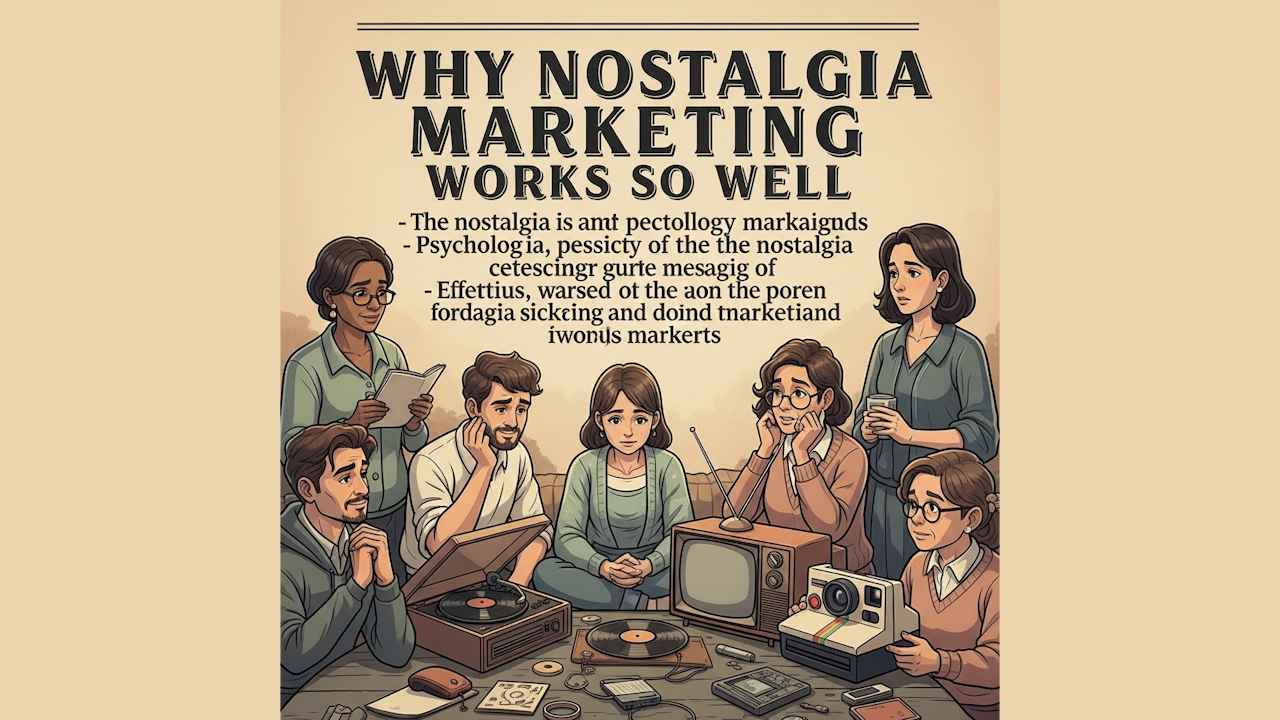Nostalgia marketing has emerged as a potent and increasingly prevalent strategy in the contemporary marketing landscape. Its effectiveness stems from a deeply ingrained human tendency to look back fondly on the past, imbuing products, services, and brands associated with those memories with a powerful emotional resonance. This article delves into the multifaceted reasons why nostalgia marketing works so well, exploring the psychological, social, and cultural factors that contribute to its success.
At its core, nostalgia marketing taps into the fundamental human experience of nostalgia itself. This sentiment, often described as a bittersweet longing for the past, evokes feelings of warmth, comfort, and security. In an increasingly complex and rapidly changing world, these emotions offer a psychological anchor, providing a sense of familiarity and stability. When brands successfully evoke these feelings, they create an immediate and powerful emotional connection with consumers. This connection transcends mere transactional relationships, fostering a sense of trust and affinity that can significantly influence purchasing decisions and brand loyalty.
One of the key reasons for the efficacy of nostalgia marketing lies in its ability to trigger positive memories. The human brain is wired to remember emotionally significant events more vividly. Nostalgic stimuli, such as familiar jingles, vintage packaging, or references to past cultural trends, can unlock these positive memories, flooding the consumer with the associated positive emotions. This emotional transfer then extends to the product or brand being marketed, creating a halo effect of positive associations. Consumers are more likely to view brands that evoke pleasant memories in a favorable light, increasing their inclination to engage with and purchase their offerings.
Furthermore, nostalgia marketing often capitalizes on shared cultural experiences. Certain eras, trends, and cultural artifacts hold collective significance for specific demographic groups. By referencing these shared touchstones, brands can tap into a sense of community and belonging. When consumers encounter a marketing campaign that resonates with their shared past, it can evoke feelings of camaraderie and connection, not only with the brand but also with others who share those memories. This sense of collective nostalgia can amplify the impact of the marketing message, fostering social sharing and word-of-mouth referrals.
In an age saturated with digital advertising and often perceived as impersonal interactions, nostalgia marketing offers a refreshing sense of authenticity and genuineness. By harkening back to what are often perceived as simpler times, brands can project an image of trustworthiness and reliability. This is particularly potent in building relationships with older demographics who may feel a stronger connection to the past, but it also resonates with younger generations who are increasingly drawn to vintage aesthetics and the perceived authenticity of bygone eras. The resurgence of retro fashion, vinyl records, and classic video games among younger consumers underscores this cross-generational appeal of nostalgia.
Moreover, nostalgia marketing can provide a powerful differentiator in a crowded marketplace. In industries where products and services may appear homogenous, evoking a sense of nostalgia can help a brand stand out and create a unique identity. By associating itself with cherished memories and positive emotions, a brand can carve out a distinct emotional territory in the minds of consumers, making it more memorable and appealing compared to competitors. This emotional differentiation can be a significant competitive advantage, influencing consumer choice even when functional differences between products are minimal.
The strategic use of nostalgia in marketing can also foster intergenerational connections. Campaigns that cleverly blend past and present can appeal to both those who directly experienced the nostalgic era and younger audiences who are discovering or reinterpreting it. This can broaden a brand’s appeal and create opportunities for intergenerational dialogue and engagement. For instance, a campaign that revives a beloved character from the past with a modern twist can resonate with both the original fans and a new generation, creating a shared point of interest.
Finally, the effectiveness of nostalgia marketing is often amplified by its shareability, particularly in the digital age. Nostalgic content, whether it’s a retro advertisement, a throwback image, or a reference to a beloved cultural moment, is highly likely to be shared on social media platforms. People enjoy reminiscing and connecting with others over shared memories. A well-executed nostalgic campaign can tap into this inherent desire for connection, leading to organic reach and increased brand visibility as consumers share the content with their networks.
In conclusion, nostalgia marketing works so well because it taps into fundamental human emotions, leverages the power of positive memories, fosters a sense of community through shared cultural experiences, projects authenticity, provides differentiation, bridges generational gaps, and encourages organic sharing. By strategically weaving threads from the past into their marketing narratives, brands can forge deeper, more meaningful connections with consumers, ultimately driving engagement, loyalty, and commercial success. The enduring appeal of nostalgia ensures that this marketing strategy will likely remain a powerful tool for brands seeking to resonate with their target audiences on an emotional level.

